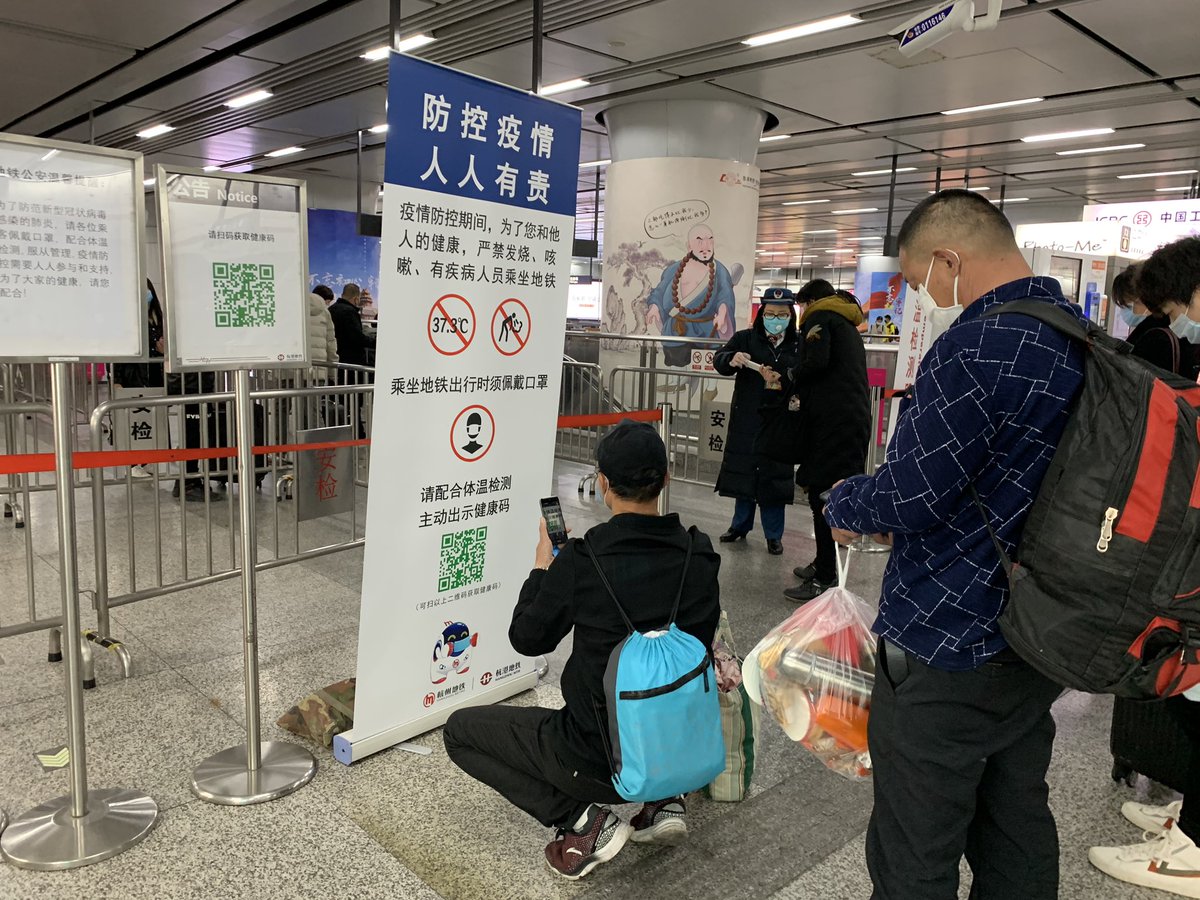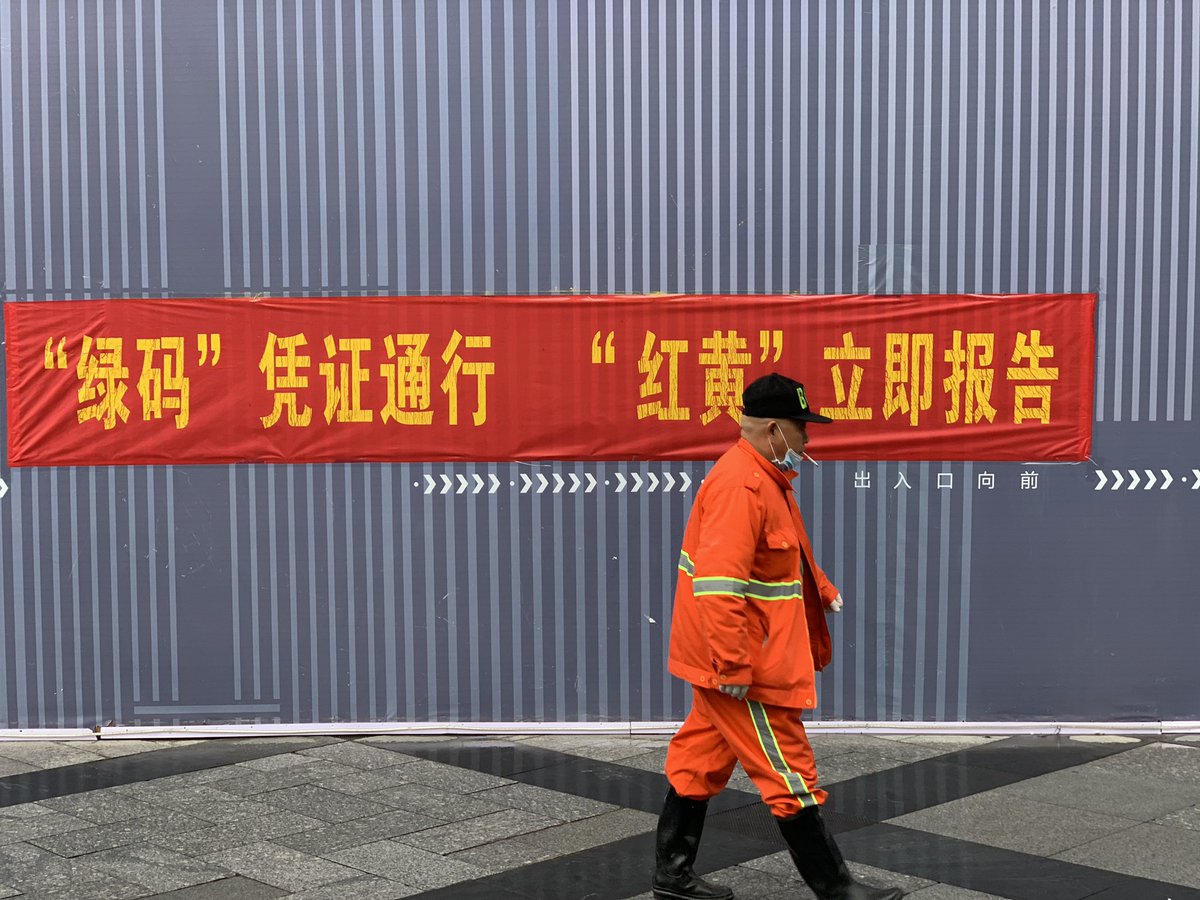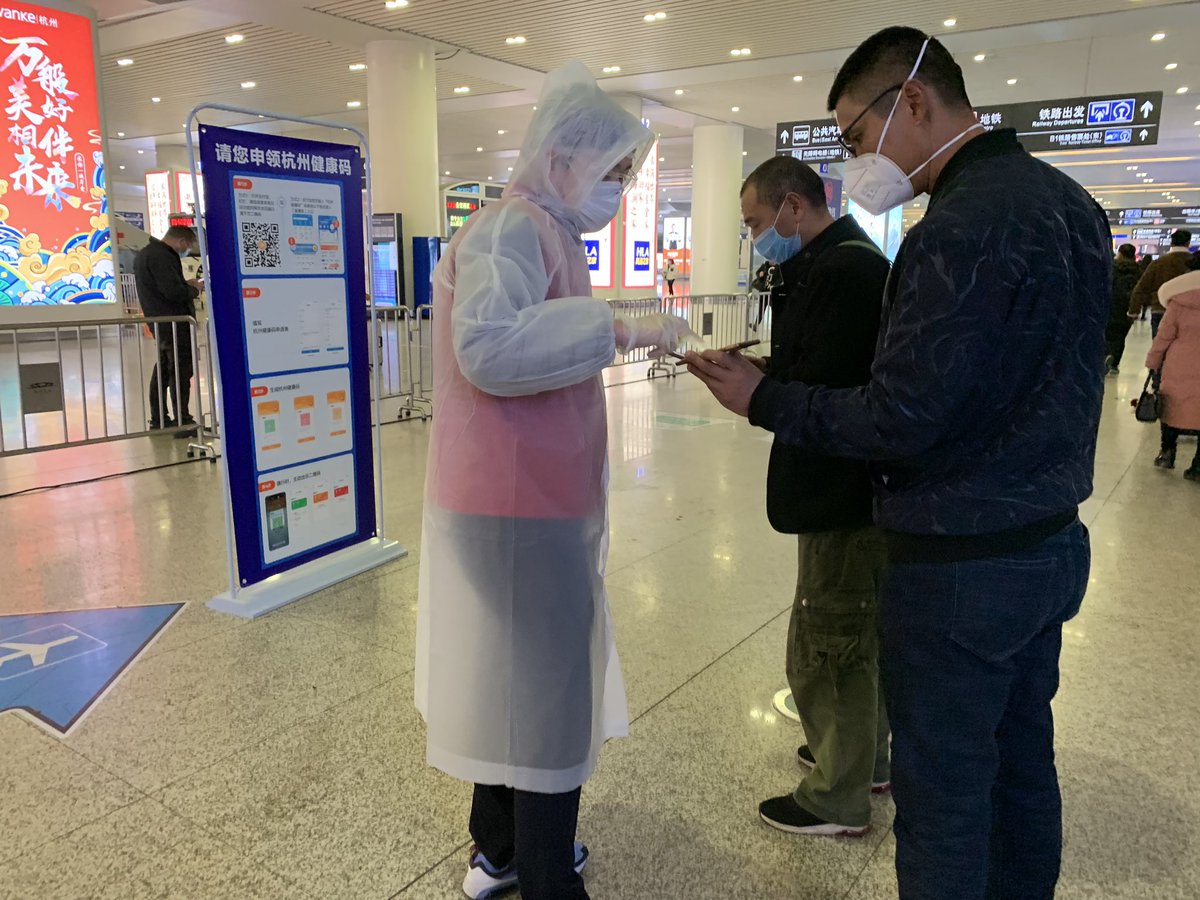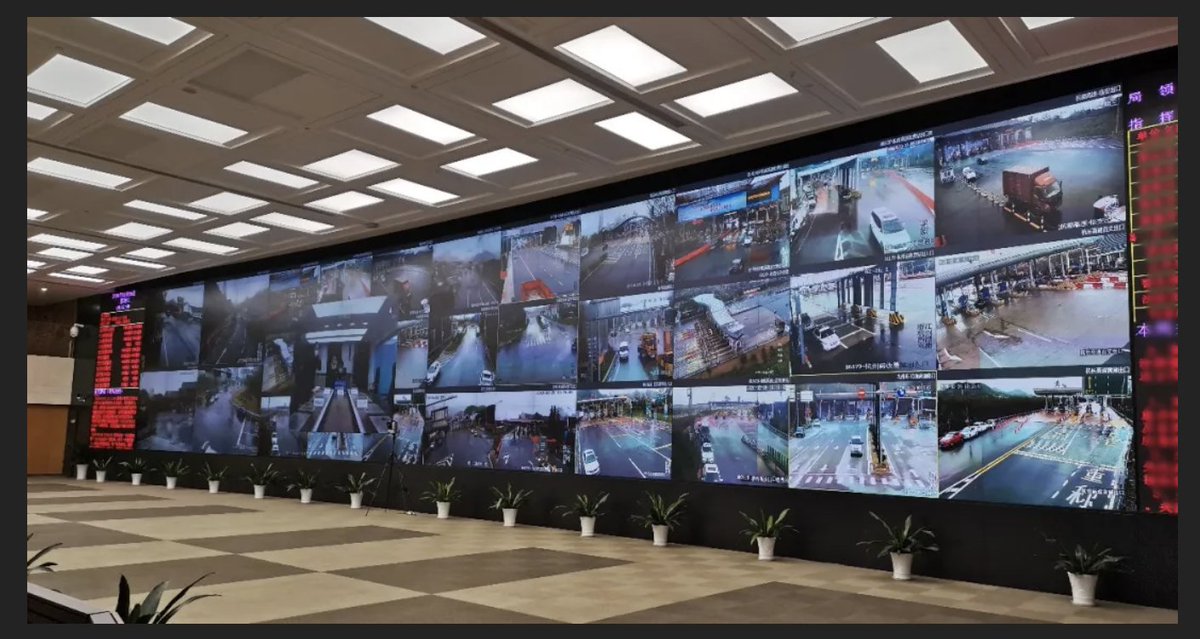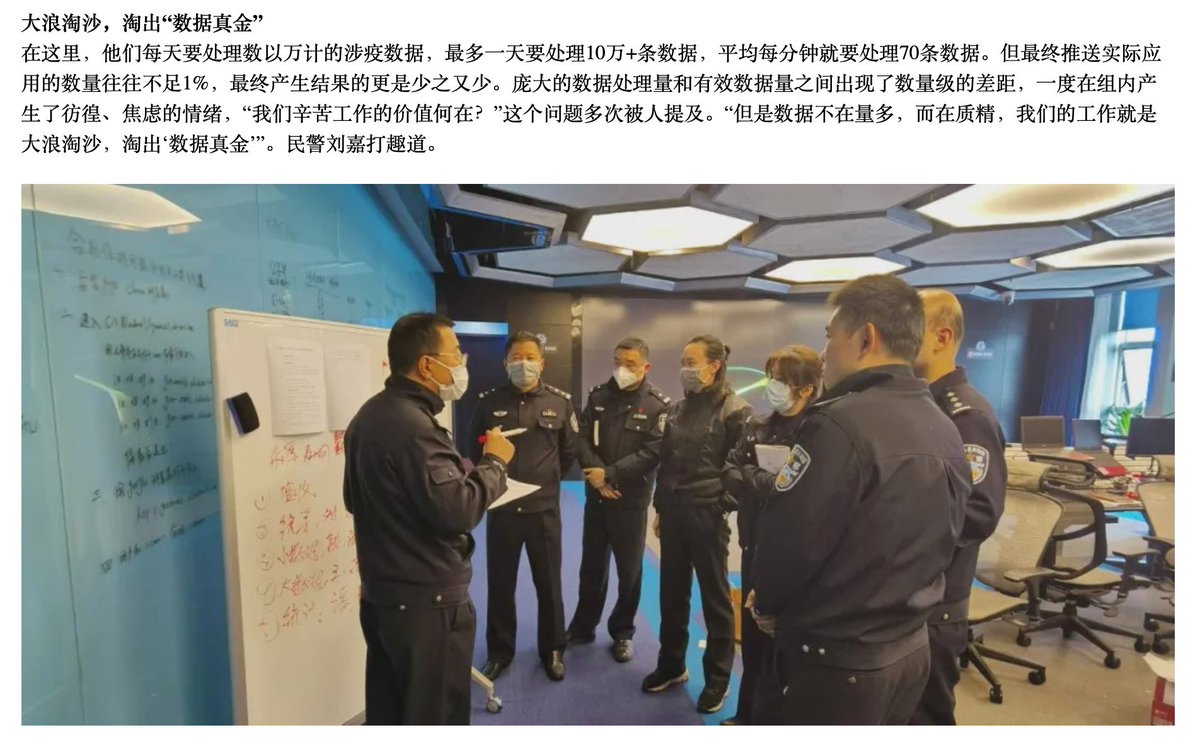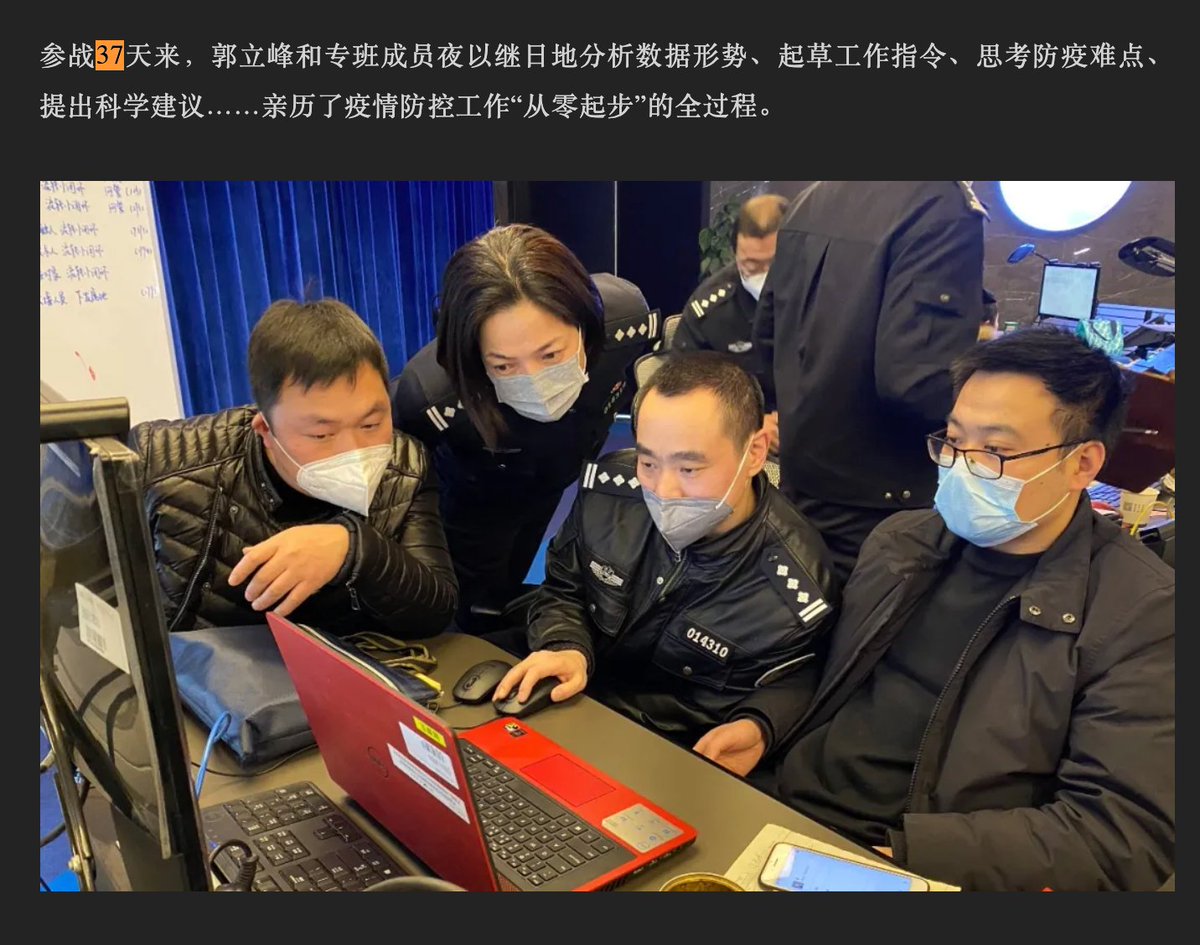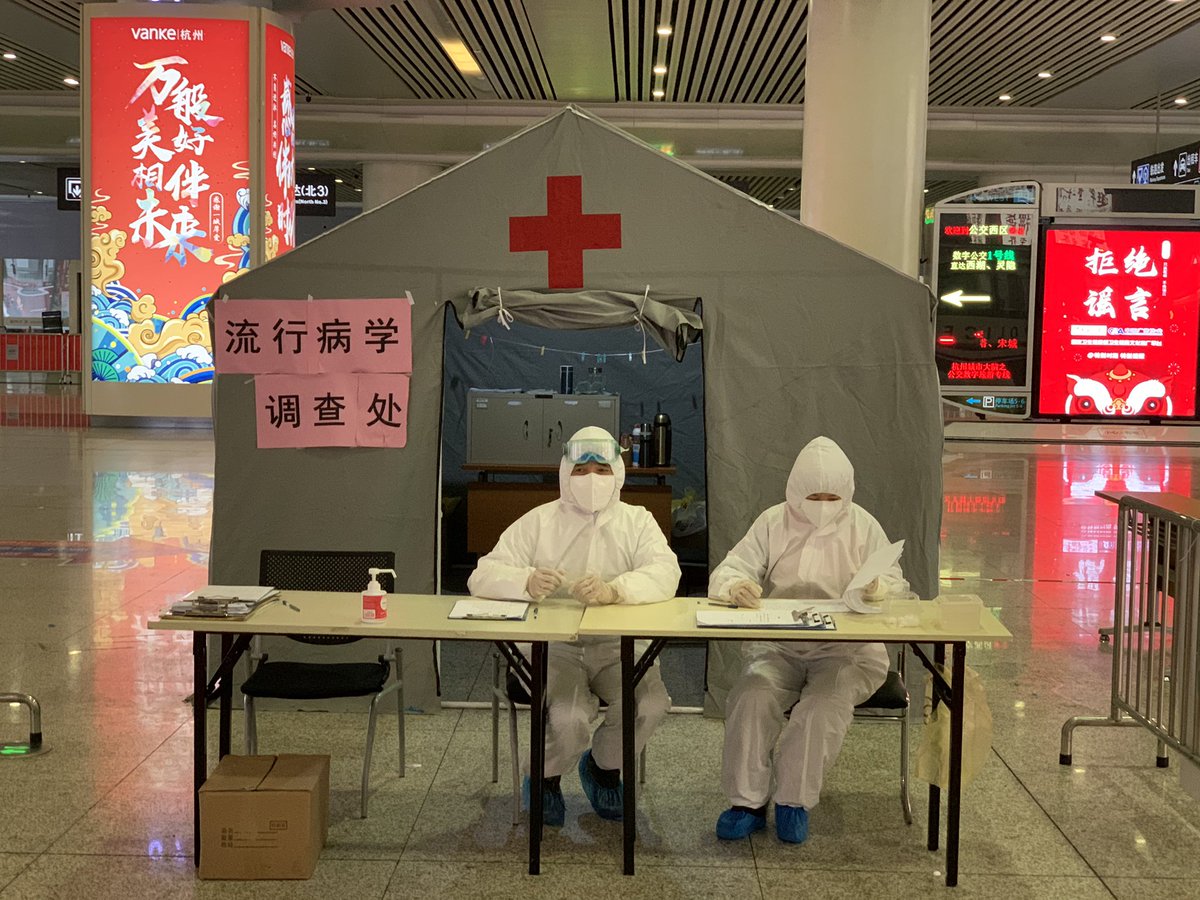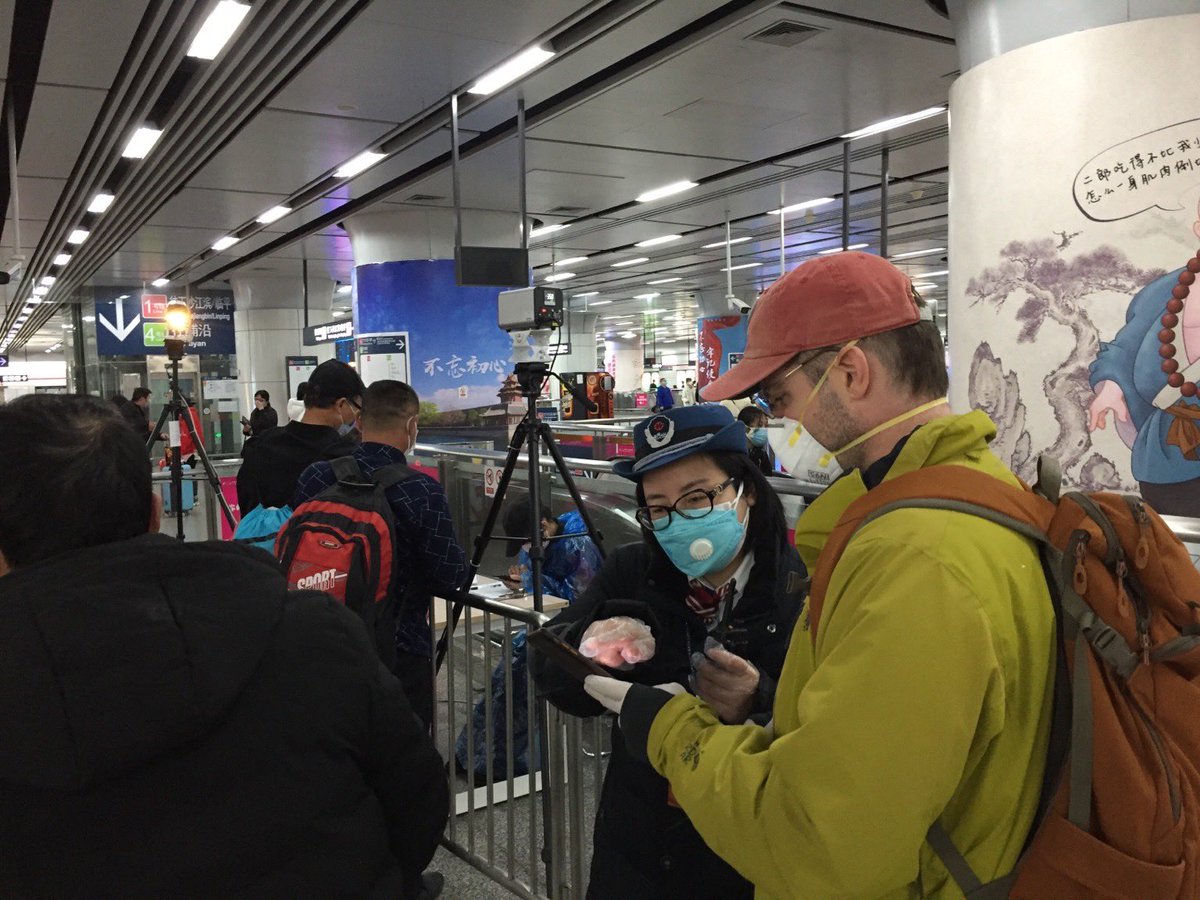To fight the coronavirus China is undertaking its biggest experiment yet in rule by data: an app that automates quarantines. Alibaba software, using unexplained data, now decides whether millions can leave their home. It also shares data with the police. https://www.nytimes.com/2020/03/01/business/china-coronavirus-surveillance.html">https://www.nytimes.com/2020/03/0...
The police part is a big step. Firms like Ali often share data with gov& #39;t, but there’s a process. In this case, the moment a user grants permissions, it runs a function “reportInfoAndLocationToPolice.” That& #39;s a new level of police tracking embedded in a hugely popular app.
Effectively, the app is required now to do anything in many places. Here& #39;s what it looks like trying to get onto the subway in Hangzhou. Overnight the city went from lockdown to relying on the app. If your code is green, you can ride. If you& #39;re given yellow or red, you& #39;re stuck.
The color codes, checkpoints, and phone searches all smack of policies carried out in Xinjiang. People in China& #39;s east aren& #39;t used to it, and there was plenty of grumbling in Hangzhou. Subway guards told us passengers, usually older, sometimes cursed and yelled at them.
Watch the guy in the teal backpack. He dutifully got the guard’s help setting it up, but got annoyed and walked through the checkpoint. She runs him down, but in the process others pass her unchecked. And traffic was light, when it& #39;s more full, there will be more problems.
It& #39;s not just the subway. To get into the city you need a green code. You also need it to get into most neighborhoods, public spaces, stores, and restaurants. Here& #39;s a few other checkpoints screening for the app.
Many who have red or yellow codes now lead lives as partial pariahs. With the digital scarlet letter they can& #39;t go out or return to work. Plenty don& #39;t understand why their code is red or yellow, yet when they call up a complaint hotline it& #39;s generally busy.
“The broad rules aren’t public....How it assigns red or yellow codes isn’t public. And there’s no clear way to make your code turn green,” said one man, who took his chances and was able to get through a checkpoint.
Others haven& #39;t been so lucky. A subway guard told us she turned away a man with a red code, even though he had a letter explaining he had sat a 14 day quarantine. The rules are the rules, she said.
A separate woman from Hubei, the province that is the center of the coronavirus outbreak, is stuck there with a red code. “It divides people up based on where they’re from,” she said. “Isn’t that discrimination?”
Drivers too, check for a green code and show theirs. One told us he trusted Jack Ma and Alibaba’s big data. Anyone with a yellow or red code was dangerous and had been in close contact with the disease, he said, an overstatement of what the codes mean. No rides for them.
It& #39;s not clear where the data goes or how the decisions are being made. Likely it ends up in a place like this, a Hangzhou police command center. Perhaps unsurprisingly, because China has empowered its public security forces recently, they have an outsized role in the response.
In propaganda they discuss reworking surveillance systems to deal w/ the virus. They also lead strategies for containing it, like setting up checkpoints. The police being so heavily involved in a public health issue does show how far down the road to police state China has gone.
The codes can& #39;t last forever. They& #39;re too inconvenient. But each time there& #39;s a crisis in China, the state takes more power. “The coronavirus outbreak is proving to be one of those landmarks in the history of the spread of mass surveillance in China," @wang_maya told us.
It’s not clear what the precedent will be. Likely it& #39;s newly empowered neighborhood committees, getting the population used to checkpoints, and potentially, companies getting comfortable sharing location info from apps directly to the police.

 Read on Twitter
Read on Twitter